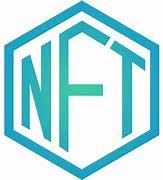
For everyone who has recently monitored the tech news, you would have noticed the frequent mention of NFTs alongside Bitcoin and blockchain. This has attracted many artists and artisans as NFT seems like a multi-million dollar digital asset.
This article will shed light on NFT (Non-fungible Tokens) alongside the tech that powers it.
What are Non-Fungible Tokens?
Even though NFT stands for Non Fungible tokens, it doesn't carry much meaning presently. The keyword fungible might point to the fact that something can be interchanged.
In economics, for instance, money is classified as a fungible asset. There are units, and they can be changed easily. For example, you can easily swap two $50 notes for a single $100, and the money will neither lose value nor gain it. It also includes tangible assets like gold, shares, and cryptocurrency in addition to money.
In essence, you can divide a fungible asset in various ways, and the supply does not have an end. One can use them in many ways, like storing value or making payments.
On the other hand, a non-fungible asset is a one-off. Typical examples are painting, artwork, a house, and others. While you might be able to copy or duplicate a painting, the original remains a masterpiece, and the values of the replicas cannot match it.
Non-fungible tokens are units of data kept on the digital ledger of a blockchain. Each NFT token is similar to a certificate of authority, revealing that such a digital asset is unique and cannot be changed. You cannot change or adjust an individual, and no one can steal it. This is due to the principle of cryptography on which the blockchain operates.
Comparing Non-fungible Tokens and Cryptocurrency
We need to establish the difference between non-fungible tokens and cryptocurrency. Even though they are both hinged on the blockchain principle, you need the difference to see how NFTs work.
However, the significant difference lies in the fact that cryptocurrency is fungible. In other words, one can exchange Bitcoin for another. This, however, is not possible with an NFT because it is tied to a specific digital asset that cannot be replaced.
What can you use Non-fungible tokens for?
Many people wonder what the use cases for NFTs are. Even though it is still a new concept, many use cases apply and here are some of the ones that stand out:
Tickets
NFTs, find applications in event tickets. Many believe that if NFT tokens are used to create tickets, any exchange of such tickets will have a record.
This will remove any loophole like using a fake ticket, stealing tickets or scalping it. Since replacing the token associated with it on the blockchain is not possible.
Fashions
NFTs can help address some of the issues in the fashion industry. A digital record of all authentic products can help address the problem with counterfeit products. As a result, valuable items with an NFT attached will reveal that it is genuine.
In the same way, a non-fungible token will also reveal vital data on a product like material used, origin, where it was sourced and others.
Collectables
Many people like collecting valuables like trinkets, artworks and others. NFT comes in to help validate the authenticity since it appears like a digital signature of approval.
Gaming
There is a significant market value attached to the gaming industry. With NFTs, gamers can own unique items. It can simply be for fun or authenticity. The tokens also find application in the gaming world.
How to Create an NFT
For everyone interested in creating NFT for their work, a series of platforms exist where one can get started. The process is not complicated, and any platform you work with will likely walk you through the process.
Keep the following in mind, however, before creating an NFT
The foundation of NFT is blockchain. Currently, the most popular one is the Ethereum blockchain.
A cryptocurrency wallet is essential. Ether is the most commonly used.
NFT marketplace exists where you can create and sell your digital asset.
FOR MORE INFORMATION ON HOW JIM McCLAFLIN , EA, NTPI FELLOW CAN BEST HELP YOU WITH YOUR TAX FILING NEEDS, PLEASE CLICK THE BLUE TAB ON THIS PAGE.
THANKS FOR VISITING.
